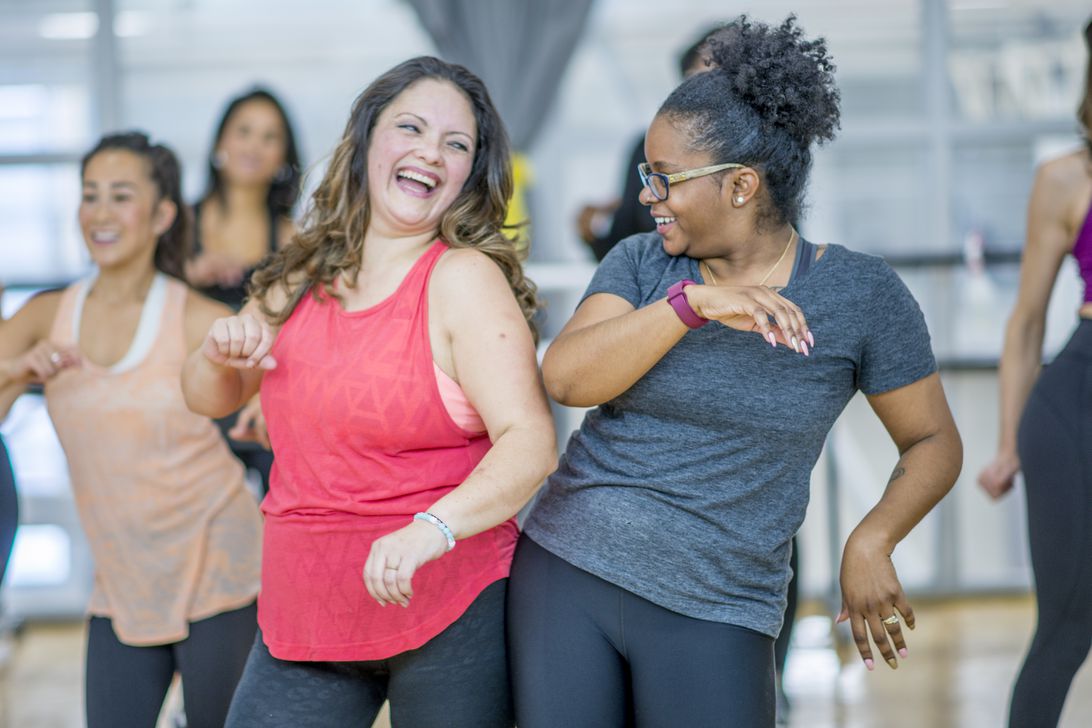
If you like hula hooping, nothing’s stopping you from making it part of your weekly exercise routine.
Hill Street Studios/Getty Images
You only get one body, and how you use it is up to you. If you’re like many people this season who decide to fill the year ahead with a little more movement, it can be a challenge to find a routine that both suits you and doesn’t feel like a chore every day. Your time is precious, after all.
Haley Perlus is a sport and exercise psychologist, fitness trainer and author. She says that in order to find exercise you like, you should ask yourself what you already love.
“It’s really more, what do you like to do? And what already gives you energy?” Perlus says. “There are hundreds of different exercise regimens. We can find one that already satisfies your existing love.”
For example, if you’re a social person who enjoys or needs the company of others for a workout, find classes where you can feel other people’s energy or even work out with friends (which could be via online classes, such as through an Apple Plus subscription). If you’re someone who is motivated by a healthy dose of competition, sign up for a 5K or another race, she says, giving you a goal to work toward.
And if you like learning new things, Perlus says, “Do not get on a treadmill, because you already know how to walk right-left, right-left.”
Similarly, if you love being outdoors, don’t exercise inside, she says. Whatever floats your boat, there is likely an exercise for that, and through a little trial and error you can find a routine that you’re proud (and happy) to call your own.
Post Contents
Resistance exercises for people who don’t like lifting weights
Resistance or strength training and keeping your body strong is an important part of our physical health, especially as we age. It’s often associated with bulky weight racks at the gym, but as far as strength or weight training goes, you don’t need anything in your hands.
“Body resistance is the best,” Perlus says, noting that she prefers body resistance over actual weight-lifting. For a strength workout using only your body (which sounds quite powerful, by the way), add resistance by placing your body at different angles, according to Perlus. For example, do wall push-ups if you don’t need much resistance, and change the angle for more. Squats, lunges, planks and yoga are great ways to stay strong without the intimidating feel of gym weights. Just make sure you’re using good form, she says.
Read more: How to strength-train without dumbbells
Finding cardio if you hate running
Perlus calls our bluff on the “I hate” narrative.
“We need to really address the ‘I hate,'” Perlus says. “Why do you say you hate? What’s the story behind it? Because sometimes we can reframe that story.”
One way is to realize that running isn’t necessary for cardio. Dancing around your house can be just as healthy as long as you get your heart pumping. There are many other ways to get cardio in, including jumping jacks, hiking and riding on an elliptical. Circuit training can also be more fun if you’re the one picking the exercises to rotate. Don’t want to jump rope? Pick a different exercise.
Importantly, Perlus says, you don’t have to do cardio for a long time. “It’s actually more quality over quantity,” she says, and the goal is to get your heart rate up.

By incorporating what you love into your workout routine, like music, you can create lifelong habits.
FatCamera/Getty Images
Still not lovin’ it?
So you’ve taken inventory of what you enjoy doing in life and found a workout routine that mirrors it. If you’ve given it a “good old college try” and still aren’t having a good time, Perlus says, the next step is figuring out what you don’t like about the routine you’re doing, and finding another that specifically addresses that problem.
Another tip from Perlus: Don’t wait until you’re at the gym (or ready to groove in your living room) to start pumping yourself up. A great way to get motivated is through music. Read more about a workout playlist trick that’s backed by science.
Make your routine sustainable
We’ve heard of “yo-yo dieting,” but “yo-yo exercising” is also to be avoided, Perlus says. “One way to get away from that is to not yo-yo in your schedule — to do something every day.” For this reason, she encourages people just beginning their exercise journey to get out there seven days a week, carving a little time out of each day. While that sounds intimidating, it doesn’t mean “high intensity” each day, she says. Rather, it’s just a way to form a routine. If walking is your chosen exercise, take a leisurely stroll one day and speed-walk the next, but make time in your schedule for it.
If you’ve decided you want to add exercise to your routine and change your life that way, it’s important to meet yourself where you are. (Shaming yourself or your body isn’t an effective motivator for exercise.) To do this, Perlus says to ask yourself two questions: What did I achieve today with my health, and what do I get to do next?
This could mean you got up every hour from your desk to move a little, or walked your dog. It could also mean you stretched for 5 minutes while watching TV.
The focus of your effort should be, Perlus says, “on what you’re achieving, and what you get to do next, versus what you have to do next.”
The information contained in this article is for educational and informational purposes only and is not intended as health or medical advice. Always consult a physician or other qualified health provider regarding any questions you may have about a medical condition or health objectives.